Thingiverse
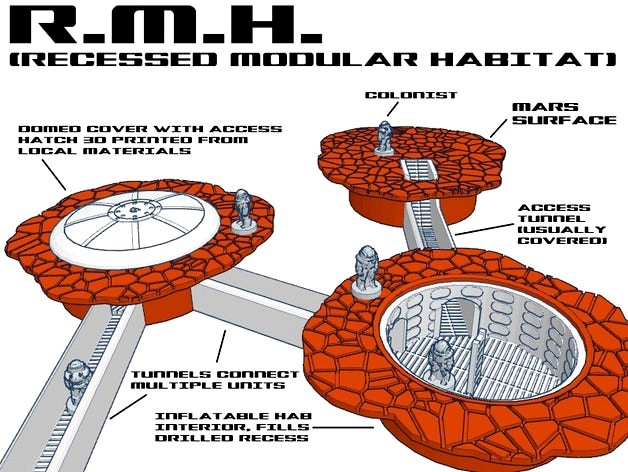
R.M.H. (Recessed Modular Habitat) by dutchmogul
by Thingiverse
Last crawled date: 2 years, 11 months ago
The Recessed Modular Habitat is designed to utilize the greatest amount of material resources natively available on Mars, in order to minimize the supplies to be transported, thus minimizing cost. There are a number of primary concerns that must be addressed when planning a long-term mission to a hostile environment; the most obvious of these are the need for water, air, and food. Secondary concerns are related mainly to the specific environment that we are focusing on, and include temperature control, the ability to generate non fuel-derived power, and providing for some defense against the intense weather experienced on the surface of the planet. We will discuss proposed solutions to these concerns, each in turn, in the outline below.
The proposed mission would take place in two phases, comprising two separate launches, approximately two years apart, to coincide with optimal Martian launch windows.
During Phase 1, the first rocket would carry equipment, a load of elemental sodium, potassium nitrate, communications equipment, and a set of five robots. A landing site would be chosen to satisfy the overlap of two basic conditions: Proximity to a polar region with significant quantities of ice, and a region with some notable geothermal activity.
Upon landing at a satisfactory site, the robots would set about constructing the habitat. Robot1 would be tasked with boring three large cylinders into the martian landscape; these cylinders would be about twenty feet across, and ten feet deep. These recesses will form the superstructure of the three rooms of our habitat. This format was chosen, because, by lowering the habitat below the surface, it becomes at once robustly insulated, as well as impervious to wind storms. As this process is taking place, Robot2 will gather a large supply of ice from the nearby ice fields. This ice will be melted down and mixed with our sodium to form sodium hydroxide, and hydrogen. The hydrogen will be captured for short-term power generation, and the sodium hydroxide will be mixed with the ferric oxide from the nearby excavation. A generator will burn our hydrogen fuel to produce electricity, with will in turn be used to electrolyse our chemical mixture to produce pure powdered iron. Robot3 will be disassembling the landing module, reconfiguring it into a set of rails, and an electric furnace and manufacturing setup. Once Robot1 has finished with its first hole, Robot4 will descend into the hole as Robot1 exits it. Robot4 is designed to burrow a narrow tunnel straight down to whatever geothermal hotspot was apparent when choosing the landing site, installing behind it a pair of sectional pipes. Robot4 is designed to remain at the bottom of these exchange pipes, and act as a control valve. This pipe-laying process is the first step in designating this first room as the eventual home of the geothermal steam turbine, or "power plant" of the habitat. (Geothermal has been chosen because dust, dust-storms, and a significant distance form the sun make solar power impractical. Wind generation is not necessarily consistent or reliable, and would risk breaking down in the strong martian winds. Geothermal is constant, low-maintenance, and highly reliable). As Robot1 starts on the second cylinder, Robot2 will gather a second load of ice. Robot3 will unpack and install the steam turbine atop the geothermal piping, and when Robot2 returns, water will be fed into the system to initiate closed-cycle steam generation, and bring on-site power online. Robot3 will connect the factory setup to the power supply, as Robot2 loads the iron powder into it, for melting. Robot3 will boil a mixture of water, potassium nitrate, and sodium hydroxide to create a chemical sealant to be applied to the iron. At this point Robot5, which is essentially just a nozzle attached to a large robotic crane arm, would begin extruding the molten iron, like a 3d-printer, across the surface of an inflatable dome-mold, to create the roof-caps of our three rooms. each cap has a circular hole in the top of it where a hatch will be installed a bit later. Once the domes are moulded, Robot3 will apply a coat of sealant to each one, while Robot2 lays sections of railing across our newly dug holes. This railing will be used after the second rocket has arrived, as support as the domes are slid across the open holes to form subterranean (or sub-martian, as the case may be) rooms. Robot1 will then burrow connecting tunnels between the three rooms, and the superstructure of our habitat will be complete!
In Phase 2, a second rocket will contain the team of scientists, dehydrated food supplies, lab equipment, and furnishings for the RMH.
Once the team has landed, they will go about finishing the interiors of the habitat. Of the three rooms, only the power plant is already complete. The team will drop an inflatable lining into the other two rooms, one of which will become the laboratory, the other of which will become the living quarters. Bunks, dining facilities, lab equipment, and bio-waste recycling equipment will be installed into the habitat, and power will be routed throughout. Doors and hatches will be installed next, and finally, the domes will be slid into place, and the habitat will be complete, and ready to live in. Sodium hydroxide produced during Phase 1 will be integrated into the air scrubbers, also generating a supply of sodium bicarbonate to be used for waste-water filtration. With protection from the elements, the ability to produce clean air, and a robust supply of both water and power, the only remaining concerns are the food supply, and musculoskeletal atrophy from microgravity.
Several additional options exist at this point. Basic needs have been covered in the short-term, so the mission may opt to undertake some of the following:
As the robots are still available for use, the option to create another room for a greenhouse exists. Hydroponics could be used to produce enough garden output to supply all of the team's nutritional needs (Assuming that a carbon-cycle could be established sufficient to support plant growth). Silicates from the surface could likely be melted to make glass for windows. The possibility for a recreation area even exists.
Were these options to be explored fully, the RMH may be able to support manned missions indefinitely.
-This project was created by myself and Dan Pettit (fellow IGG developer). Due to printer maintenance, I haven't been able to complete the printed parts, though its nearly finished and I'll post pics very soon.-
The proposed mission would take place in two phases, comprising two separate launches, approximately two years apart, to coincide with optimal Martian launch windows.
During Phase 1, the first rocket would carry equipment, a load of elemental sodium, potassium nitrate, communications equipment, and a set of five robots. A landing site would be chosen to satisfy the overlap of two basic conditions: Proximity to a polar region with significant quantities of ice, and a region with some notable geothermal activity.
Upon landing at a satisfactory site, the robots would set about constructing the habitat. Robot1 would be tasked with boring three large cylinders into the martian landscape; these cylinders would be about twenty feet across, and ten feet deep. These recesses will form the superstructure of the three rooms of our habitat. This format was chosen, because, by lowering the habitat below the surface, it becomes at once robustly insulated, as well as impervious to wind storms. As this process is taking place, Robot2 will gather a large supply of ice from the nearby ice fields. This ice will be melted down and mixed with our sodium to form sodium hydroxide, and hydrogen. The hydrogen will be captured for short-term power generation, and the sodium hydroxide will be mixed with the ferric oxide from the nearby excavation. A generator will burn our hydrogen fuel to produce electricity, with will in turn be used to electrolyse our chemical mixture to produce pure powdered iron. Robot3 will be disassembling the landing module, reconfiguring it into a set of rails, and an electric furnace and manufacturing setup. Once Robot1 has finished with its first hole, Robot4 will descend into the hole as Robot1 exits it. Robot4 is designed to burrow a narrow tunnel straight down to whatever geothermal hotspot was apparent when choosing the landing site, installing behind it a pair of sectional pipes. Robot4 is designed to remain at the bottom of these exchange pipes, and act as a control valve. This pipe-laying process is the first step in designating this first room as the eventual home of the geothermal steam turbine, or "power plant" of the habitat. (Geothermal has been chosen because dust, dust-storms, and a significant distance form the sun make solar power impractical. Wind generation is not necessarily consistent or reliable, and would risk breaking down in the strong martian winds. Geothermal is constant, low-maintenance, and highly reliable). As Robot1 starts on the second cylinder, Robot2 will gather a second load of ice. Robot3 will unpack and install the steam turbine atop the geothermal piping, and when Robot2 returns, water will be fed into the system to initiate closed-cycle steam generation, and bring on-site power online. Robot3 will connect the factory setup to the power supply, as Robot2 loads the iron powder into it, for melting. Robot3 will boil a mixture of water, potassium nitrate, and sodium hydroxide to create a chemical sealant to be applied to the iron. At this point Robot5, which is essentially just a nozzle attached to a large robotic crane arm, would begin extruding the molten iron, like a 3d-printer, across the surface of an inflatable dome-mold, to create the roof-caps of our three rooms. each cap has a circular hole in the top of it where a hatch will be installed a bit later. Once the domes are moulded, Robot3 will apply a coat of sealant to each one, while Robot2 lays sections of railing across our newly dug holes. This railing will be used after the second rocket has arrived, as support as the domes are slid across the open holes to form subterranean (or sub-martian, as the case may be) rooms. Robot1 will then burrow connecting tunnels between the three rooms, and the superstructure of our habitat will be complete!
In Phase 2, a second rocket will contain the team of scientists, dehydrated food supplies, lab equipment, and furnishings for the RMH.
Once the team has landed, they will go about finishing the interiors of the habitat. Of the three rooms, only the power plant is already complete. The team will drop an inflatable lining into the other two rooms, one of which will become the laboratory, the other of which will become the living quarters. Bunks, dining facilities, lab equipment, and bio-waste recycling equipment will be installed into the habitat, and power will be routed throughout. Doors and hatches will be installed next, and finally, the domes will be slid into place, and the habitat will be complete, and ready to live in. Sodium hydroxide produced during Phase 1 will be integrated into the air scrubbers, also generating a supply of sodium bicarbonate to be used for waste-water filtration. With protection from the elements, the ability to produce clean air, and a robust supply of both water and power, the only remaining concerns are the food supply, and musculoskeletal atrophy from microgravity.
Several additional options exist at this point. Basic needs have been covered in the short-term, so the mission may opt to undertake some of the following:
As the robots are still available for use, the option to create another room for a greenhouse exists. Hydroponics could be used to produce enough garden output to supply all of the team's nutritional needs (Assuming that a carbon-cycle could be established sufficient to support plant growth). Silicates from the surface could likely be melted to make glass for windows. The possibility for a recreation area even exists.
Were these options to be explored fully, the RMH may be able to support manned missions indefinitely.
-This project was created by myself and Dan Pettit (fellow IGG developer). Due to printer maintenance, I haven't been able to complete the printed parts, though its nearly finished and I'll post pics very soon.-
Similar models
3dwarehouse
free

Hydrochloric acid titration
...ration
3dwarehouse
the apparatus to titrate hydrocloric acid with sodium hydroxide, produces h20 and nacl #acid #science #spyder
cg_trader
$12

robot
...robot
cg trader
3d model robot robot2 robo robot2 robot1, formats max, obj, mtl, fbx, stl, dwg, ready for 3d animation and ot
3dwarehouse
free

Mardix intelligent Power Distribution Unit for Data Centers delivering power to IT Room. 3 Phases power supply. 144 Mono Phase breakers.
...er to it room. 3 phases power supply. 144 mono phase breakers. #3_phases #data_centers #ipdu #it_room #mardix #power_distribution
grabcad
free

SKD82 Bridge
...skd82 bridge
grabcad
power bridge rectifiers from semikron (semipont®3).
three phase rectifier for power supplies
thingiverse
free

HI-SEAS Analog Mars Habitat - Martian Dome Keychain size by zakw
...s analog mars habitat - martian dome keychain size by zakw
thingiverse
remix of my larger hi-seas dome model with keychain loop.
cg_trader
$2

Geothermal Power Station
...eothermal power plant generating energy from the forces of the earth in a low poly style. low-poly, color-palettes, no animation.
cg_trader
free

Sodium hydroxide 3D Model NaOH
... having labeling and showing angles between bonds and length of bonds.
red = oxygen (o)
purple = sodium (na)
white = hydrogen (h)
grabcad
free

Hydrogen Generator
...through the hose. for the electrolyte use 3 tablespoons of 100% lye (sodium hydroxide) to 1.5 quarts of distilled water. enjoy!
3dwarehouse
free

Mardix iPDU
...er to it room. 3 phases power supply. 144 mono phase breakers. #3_phases #data_centers #ipdu #it_room #mardix #power_distribution
3dwarehouse
free

Mardix iPDU
...er to it room. 3 phases power supply. 144 mono phase breakers. #3_phases #data_centers #ipdu #it_room #mardix #power_distribution
Dutchmogul
thingiverse
free

Castleflower by dutchmogul
...dutchmogul
castles designed by: william the conqueror
flowers designed by: (hotly contested)
hand model: dutchmogul
-for leanne
thingiverse
free

Dreidel by dutchmogul
...dreidel by dutchmogul
thingiverse
happy hanukkah!
thingiverse
free

UFOrnament by dutchmogul
...ufornament by dutchmogul
thingiverse
abducto the alien is here to make your holidays out of this world!
thingiverse
free

Dragon Ornament by dutchmogul
...dragon ornament by dutchmogul
thingiverse
happy holidays!
thingiverse
free

Toychest Ornament by dutchmogul
...toychest ornament by dutchmogul
thingiverse
-dedicated to adeline
thingiverse
free
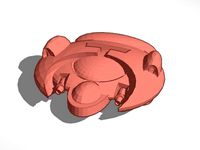
The Nemesis by dutchmogul
...he nemesis by dutchmogul
thingiverse
this thing was made with tinkercad. edit it online https://tinkercad.com/things/caqz8dryy8k
thingiverse
free

The Roosevelt by dutchmogul
... roosevelt by dutchmogul
thingiverse
this thing was made with tinkercad. edit it online https://tinkercad.com/things/awstwh2ksfy
thingiverse
free
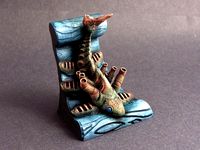
Steamed Fish by dutchmogul
...steamed fish by dutchmogul
thingiverse
designed in sculptris and tinkercad.
thingiverse
free

Chest inspired by dutchmogul's Barrel by qubist
...chest inspired by dutchmogul's barrel by qubist
thingiverse
a chest matching dutchmogul's barrel
thingiverse
free

Words of Wisdom by dutchmogul
...ountain and achieve "enlightenment."
be sure and check the instructions to see print quantities. enjoy!
-dutchmogul
Habitat
3ddd
$1

СтолTonin Habitat
...столtonin habitat
3ddd
круглый
столtonin habitat делал по каталогу
текстуры есть
3d_export
$7
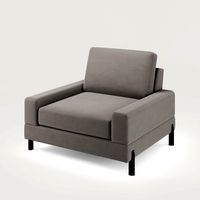
grey chair habitat
...grey chair habitat
3dexport
brand: habitat grey chair size:
3d_ocean
$12

Habitat Estar Arm Chair
... chair estar habitat indoor leather seating
habitat estar arm chair 3d model includes files: 3dsmax2010; fbx; obj v-ray meterials
cg_studio
$40
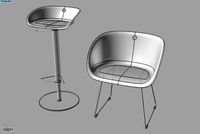
Habitat Palocco chair3d model
...dio
.3dm .3ds .c4d .dxf .obj - habitat palocco chair 3d model, royalty free license available, instant download after purchase.
3d_export
$10

Habitat Estar Arm Chair 3D Model
...ture indoor design
habitat estar arm chair 3d model download .c4d .max .obj .fbx .ma .lwo .3ds .3dm .stl genkot27 104563 3dexport
3d_export
$19

Underwater habitat sea life seascape ship reef coral panorama seabed
...reef coral panorama seabed ocean floor undersea fish cartoon water lake seafloor plant aquatic plants rigged 2. files include max
3d_export
$16

Habitat Rolio Sun Lounger
... x 75.75" x 25.9"<br>- model parts: 3<br>- material count: 2<br>- xform: yes<br>- boxtrick: yes
design_connected
$16

Romeo
...romeo designconnected habitat romeo computer generated 3d model. designed by navone,...
design_connected
$16

Maarten
...maarten designconnected viccarbe habitat maarten computer generated 3d model. designed by carrasco,...
design_connected
$10

Burin
...burin designconnected viccarbe habitat burin computer generated 3d model. designed by urquiola,...
Recessed
turbosquid
$7

Recessed box
...squid
royalty free 3d model recessed box for download as c4d on turbosquid: 3d models for games, architecture, videos. (1509124)
turbosquid
$2

Recessed light
...el recessed light for download as 3ds, max, obj, fbx, and stl on turbosquid: 3d models for games, architecture, videos. (1351263)
3ddd
free
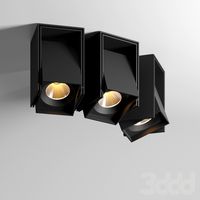
Modular Rector Recessed
...modular rector recessed
3ddd
modular
78*78*112http://www.supermodular.com/en/products/rektor-recessed/
3d_ocean
$5

Recessed Square Spotlights
...ght recessed spot light spotlight
set of recessed square spotlights. contains 3 high quality models with realistic v-ray shaders.
3d_ocean
$12

office recessed ceiling light
...3docean
ceiling lights ceiling lights lighting office lights office lights recessed light
recessed light usually seen on offices.
turbosquid
free

Floor recessed lights
... available on turbo squid, the world's leading provider of digital 3d models for visualization, films, television, and games.
3d_export
free

grilyato fluorescent recessed luminaire
...ato fluorescent recessed luminaire
3dexport
grillato luminescent recessed lamp lvo 4x18-csvt 595x595 with mirror reflecting grid
3ddd
free

SLV CALU RECESSED 1
...slv calu recessed 1
3ddd
slv
светильник slv calu recessed 1, подвесной потолочный, настенный, цвет черный матовый
3ddd
$1
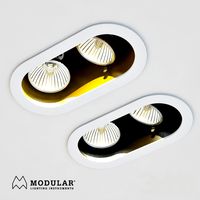
Modular, Duell recessed, Nr 11070529
...modular, duell recessed, nr 11070529
3ddd
modular
http://www.supermodular.com/en/products/duell/?mounting=recessed
3d_export
$10
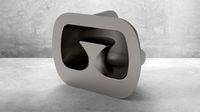
Recessed shell bitts
...material,surface coating etc are optional; 3.one year quality warranty; 4.chemical analysis report 5.dimensional as-built reports
Modular
3ddd
$1

MODULAR
...modular
3ddd
modular , врезной свет
modular потолочные светильники
3ddd
$1
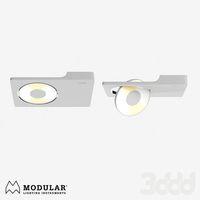
Modular Spock
...modular spock
3ddd
modular
modular spock
3ddd
$1
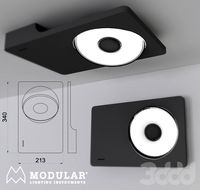
MODULAR / Spock
...modular / spock
3ddd
modular
modular/spock
design_connected
$7
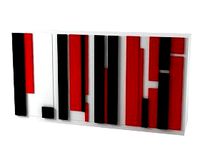
Modular
...modular
designconnected
emmemobili modular shelves and storage computer generated 3d model. designed by ferruccio laviani.
3ddd
$1
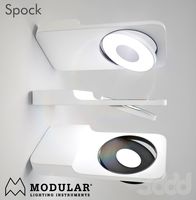
Modular spock
...modular spock
3ddd
modular
spock wall led
3ddd
$1
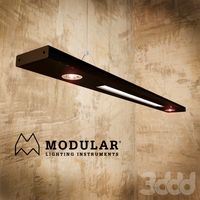
Modular 2FLAT2C
...modular 2flat2c
3ddd
modular
modularhttp://www.supermodular.com/
3d_export
free
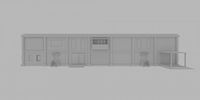
Modular walls
...modular walls
3dexport
modular walls for playing without materials and textures
3ddd
$1

Modular / Lighting Juliette
...modular / lighting juliette
3ddd
modular
modular lighting juliette
3ddd
$1
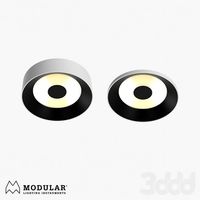
Modular Kurk Surface
...modular kurk surface
3ddd
modular
modular kurk surface
3d_export
$5
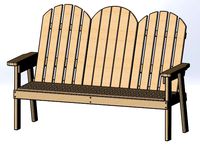
Modular sofa
...modular sofa
3dexport
modular sofa: 3 seats or 2 seats + table
R
3ddd
$1

ORLANDO R
...orlando r
3ddd
новый стиль
новый стиль - orlando r
design_connected
$11
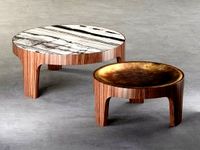
R-Table
...r-table
designconnected
henge r-table computer generated 3d model. designed by castagna, massimo.
design_connected
$7

Cone R
...cone r
designconnected
bonaldo cone r computer generated 3d model. designed by pasini, ennio.
3ddd
$1

R&B
...r&b
3ddd
r&b
спальный гарнитур r&b;
3d_export
$5

nissan gt-r
...nissan gt-r
3dexport
this is nissan gt-r
3d_export
$5
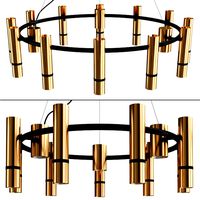
react r
...r 9 lamps (6+3) ø 60 × 21 cm 12 lamps (9+3) ø 80 × 21 cm polys: 208 539 verts: 213 675 https://ru.lampachn.com/react-r-p0551.html
3d_export
free

Audi TT-R
...audi tt-r
3dexport
audi tt-r team abt sportsline
3d_ocean
$50

Saleen S7-R
...le r race s s7-r s7r saleen sedan sports street transport tuner vehicle
highly detailed exterior and interior of the saleen s7-r.
3d_ocean
$50

Nissan GT-R
...luxury muscle nissan r race sedan sports street transport tuner vehicle
highly detailed exterior and interior of the nissan gt-r.
3ddd
$1

Orac r 27
...orac r 27
3ddd
розетка
розетка по каталогу orac r 27
M
3ddd
$1

bag m&m's
...bag m&m's
3ddd
bag m&m's
bag m&m;'s
3d_export
$35
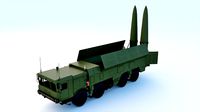
iskander m
...iskander m
3dexport
iskander m 3d model
design_connected
$7
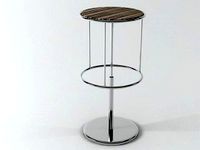
barstool m
...barstool m
designconnected
barstool m computer generated 3d model.
3ddd
free
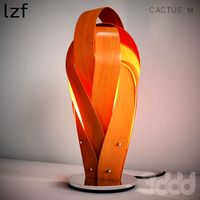
CACTUS M
...cactus m
3ddd
cactus , lzf
настольный светильник cactus m
производитель lzf
design_connected
$13
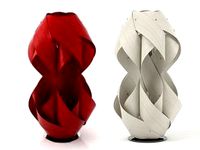
Anfora M
...anfora m
designconnected
lzf anfora m computer generated 3d model. designed by herranz, miguel.
3ddd
$1
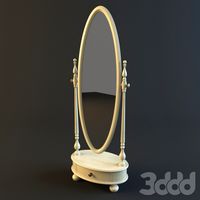
зеркало M Gastone
...зеркало m gastone
3ddd
зеркало m gastone
зеркало m gastone
design_connected
$16

Dogon M
...dogon m
designconnected
emmemobili dogon m chairs computer generated 3d model. designed by ferruccio laviani.
design_connected
$9
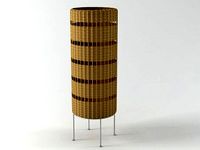
Sunlight M
...sunlight m
designconnected
bonacina pierantonio sunlight m computer generated 3d model. designed by bizzozzero, franco.
3ddd
$1
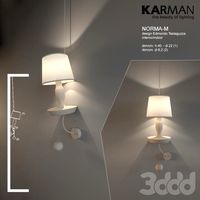
Karman / Norma-M
...arman , norma-m
http://www.karmanitalia.it/en/prodotto/norma-m/norma-m-ap640n/
design_connected
$7
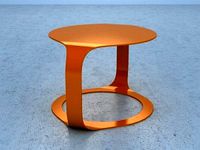
Ora M
...ora m
designconnected
sphaus ora m coffee tables computer generated 3d model. designed by roberta savelli.
